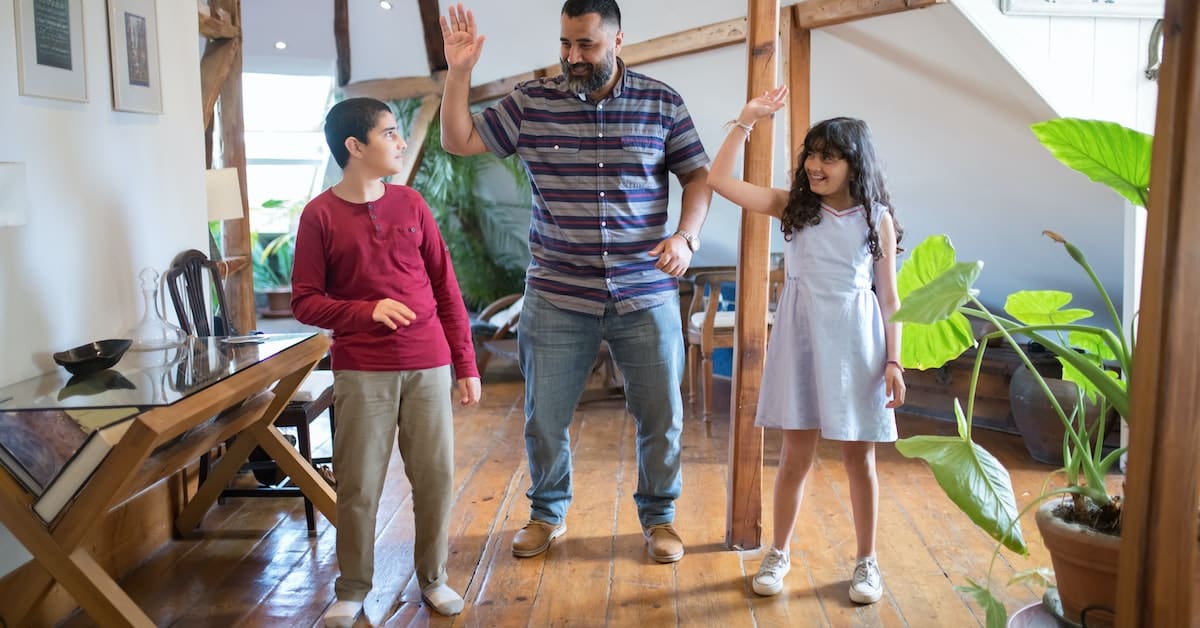If you’re getting divorced with kids, you might be wondering what you need to know about a father’s rights in Texas after a divorce.
It is true that mothers tend to be awarded primary custody of their children in divorces more often than fathers. However, under Texas law, the rights of both parents in a divorce are protected equally.
Many people assume that mothers are given priority when it comes to the custody of children after a divorce. While this was true in previous decades, the laws in a number of states– including Texas– have changed to reflect the reality that mothers and fathers are equal partners in raising children.

Even if you weren’t awarded primary custody of your children, the expectation is that fathers will spend time with their children regularly based on a parenting schedule or possession order.
While fathers technically have the same rights as mothers in divorce, that doesn't mean that fathers and mothers are awarded primary custody equally. In fact, according to the state attorney general's office, 92% of custodial parents in Texas are women.
This does contradict to some extent the notion that gender isn't relevant in the determination of custody. If you are a father and you believe having primary custody would be in the best interest of your children, you'll probably want to work with a lawyer that can help you achieve the best possible outcome for your kids.
When deciding who will have custody of a child, Texas courts always begin by considering what is in the best interest of the child. Courts used to favor mothers, assuming they would be more suitable caregivers, but this is no longer the case in Texas.

In a lot of divorces and custody cases, both parents are responsible for parenting their children and financially supporting them. Texas law presumes that it is typically best for the children if both parents are actively involved in their lives. That is unless there are compelling reasons that spending time with one parent would be harmful to the kids or not in their best interest.
Most states, including Texas, first consider joint custody because this is presumed to be the best outcome for kids. When both parents are named as Joint Managing Conservators in a custody order, it typically means that they share the responsibility of making important decisions about their child’s life, including their medical treatment and similar issues.

Having joint custody in Texas doesn’t mean that both parents spend an equal amount of time with the kids. Usually, one parent will be awarded the right to choose the primary physical residence of the child. The kids will, in most cases, live with this parent for more than half of the time. This parent, known as the custodial parent, has the right to receive child support payments to help financially support the kids.
The other parent, known as the non-custodial parent, usually has visitation rights and is the party responsible for making child support payments.
In some instances, joint custody isn’t an option or isn’t seen by a judge as being in the best interest of the child. There needs to be a good reason to name one parent a sole managing conservator, such as child abuse or domestic violence. This type of order can reduce or revoke a parent’s right to make decisions about the child’s life.
A Standard Possession Order (SPO) is usually included in most custody orders. These outline the time that each parent will spend with their child. Parenting time is known as “access and possession” in custody orders, which is synonymous with “visitation.”

The terms of the basic SPO look like this:
The Standard Possession Order will also outline:
If the parents live farther than one hundred miles from one another, SPOs include the following changes to the standard order:
Courts don’t have to issue custody orders using the SPO in the following situations:
Texas courts have the right and ability to many any orders they believe will help to protect the child. This means, for example, they can order parents to get drug tested or order that visitation with a parent is supervised.
The Expanded Standard Possession Order is a new type of standard possession order introduced on September 1, 2021. Created for parents that live fifty miles apart or closer, this possession order allows the non-custodial parent to spend extra time with their kids. The difference between the expanded SPO and the SPO is that the former allows the non-custodial parent to have visitation with their kids starting from the time they’re released from school on Thursday until school begins the next Monday.
In most divorces, fathers that want to spend more time with their children but aren’t awarded primary custody will be able to achieve the outcome of an Expanded SPO. Even though it might not seem like a lot of extra time, over the course of a year the extra hours add up. The overall breakdown of which parent the child spends time with is more like 55/45 in favor of your ex.
A Modified Possession Order can be included in a custody order if the SPO is inappropriate or unworkable in a specific situation. Anything that strays from the standard arrangement falls under the category of a Modified Possession Order. If you need to write a modified order, it’s likely best to work with a lawyer.
If a Supervised Possession Order is included in your custody order, it means that the time one parent spends with a child is required to be supervised. The supervisor can be a neutral third party, a family member, or an agency depending on the situation.
When custody and visitation are contested by a parent during a Texas divorce, you can work with your soon-to-be-ex and attorneys, parenting counselors, and mediators to try and create a parenting plan that will be in the best interest of the kids.
Both parents in this scenario have the chance to propose a parenting plan they believe will be best for the mental, emotional, and physical needs of the children.
As a father, you have a right to put forward a plan that you think will be best for the children, just as your kids’ mother does.
Many fathers have heard and read horror stories about judges that have a bone to pick with fathers in general and won’t award any parenting time to fathers without any good reason. This means that a lot of fathers will be happy to settle for any time with their kids because they feared the worst.
Some fathers, though, have good reason to want to be the primary caregiver of their children. It’s important to know that you have the right to fight for sole custody if you believe that is what is in the best interest of the kids or to be the custodial parent in a joint custody arrangement.
Here are a few tips for fathers that want to ensure they get to see their kids as much as possible after divorce:
Are you looking for more information about getting divorced in Texas? Check out the rest of our Texas Divorce Law blog to find tons of useful resources.